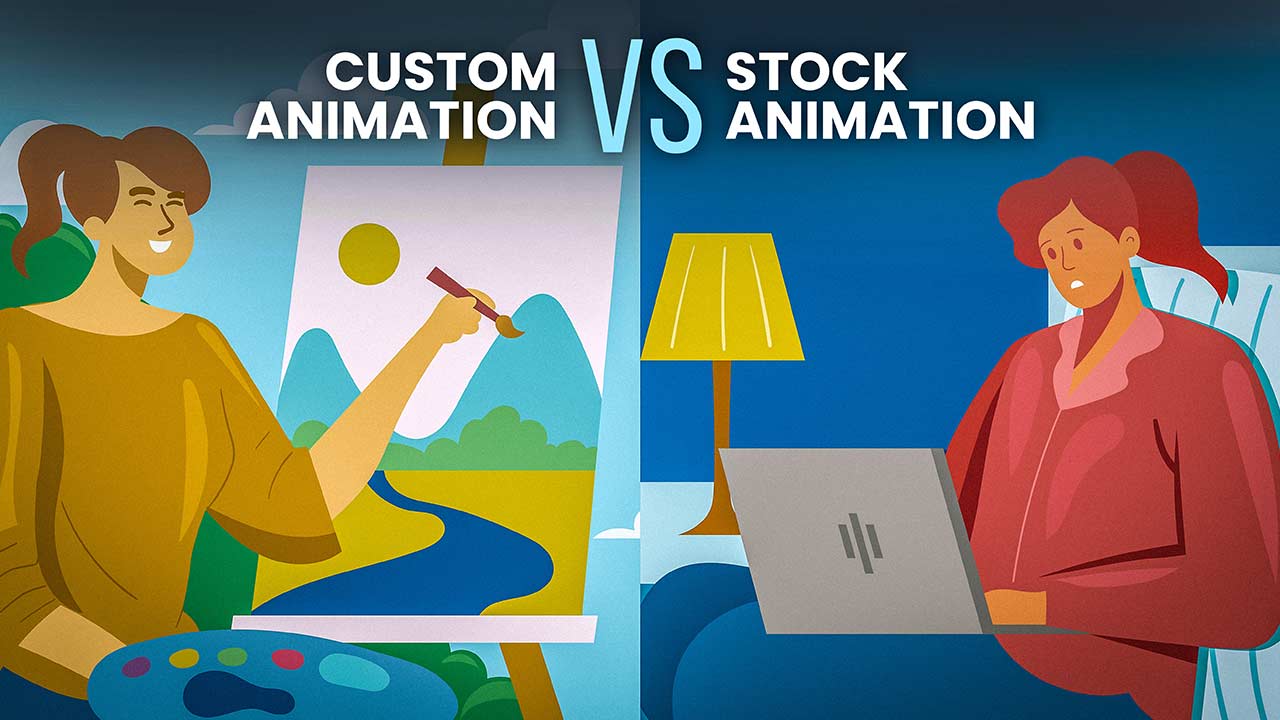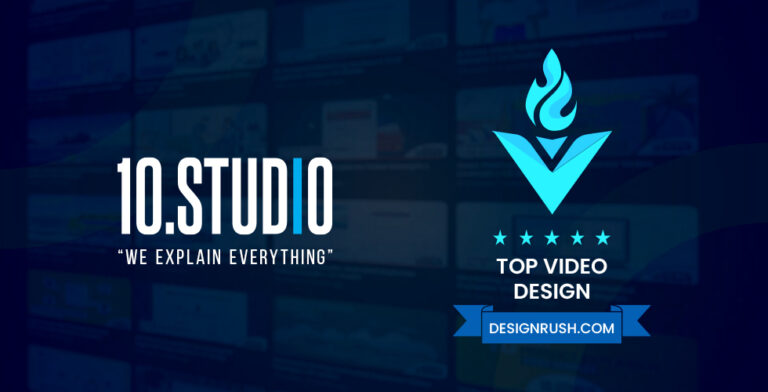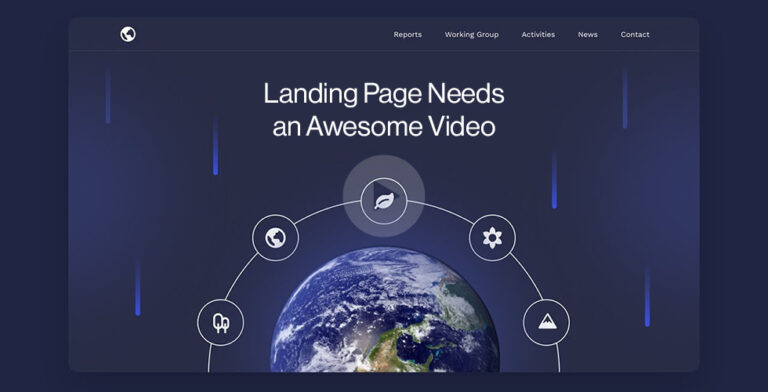According to Statista, the global animation market was valued at over 372 billion dollars at the end of 2021. Forecasters expect this value to increase by another 60% within 2030 as animation expands across various forms of media and industries. Also, it was discovered that 2D animated content held the largest share of the market, followed closely by 3D animation. Furthermore, it has also been observed that 54% of consumers prefer to see video content from their favorite brands, and 81% of businesses that use video marketing have had an influx of website traffic. These are just a small number of stats from recent years that shows how significant the animation industry is and how much potential it has to grow even further. So, if you are also running a business and wondering if you should integrate animated videos into your marketing strategy, then the resounding answer is YES! But the question can then be shifted to whether you should use custom animation or stock animation for your business. Well, to answer that, we have dedicated this article so that you can make a well-informed decision about which route to take.
The main difference between custom animation vs stock animation is – Custom animation is made from scratch according to the client’s requirements, whereas stock animation is created using already pre-existing animation templates with some slight modifications.
But that is a rather simple way of looking at it as there are several other elements to consider when considering which kind of animation you want for your business. That is why we are going to be breaking down all the different aspects of custom and stock animation so that you have the required knowledge to make an informed decision. Let’s get right into it!
What Is Custom Animation?
Custom animation refers to creating animation from scratch for a particular project, product, or service. This involves designing various animation elements such as the characters, the background, and the movements, in order to meet the client’s requirements. Both traditional and modern animation techniques are used such as hand-drawn, computerized, stop-motion, whiteboard, etc. to create custom animations. They can be used to create explainer videos, product demos, educational content, ads, and several other kinds of videos that will serve to enhance your business. Hence, they can be tailored to target a specific audience, portray a particular brand identity, or convey a unique marketing message.
What Are The Advantages of Custom Animation?
- Customizable: As you can probably tell from the term “Custom Animation” – they are fully customizable and are completely unique. That means you have complete creative control over the final product.
- Versatile: Since custom animations are made from scratch, they are very versatile. That means businesses and brands can tailor custom animations for a variety of purposes like films, tv shows, music videos, explainer videos, educational content, ads, demos, etc.
- Repurposeable: One of the best things about custom animations is that they can be easily repurposed for different forms of marketing campaigns and projects.
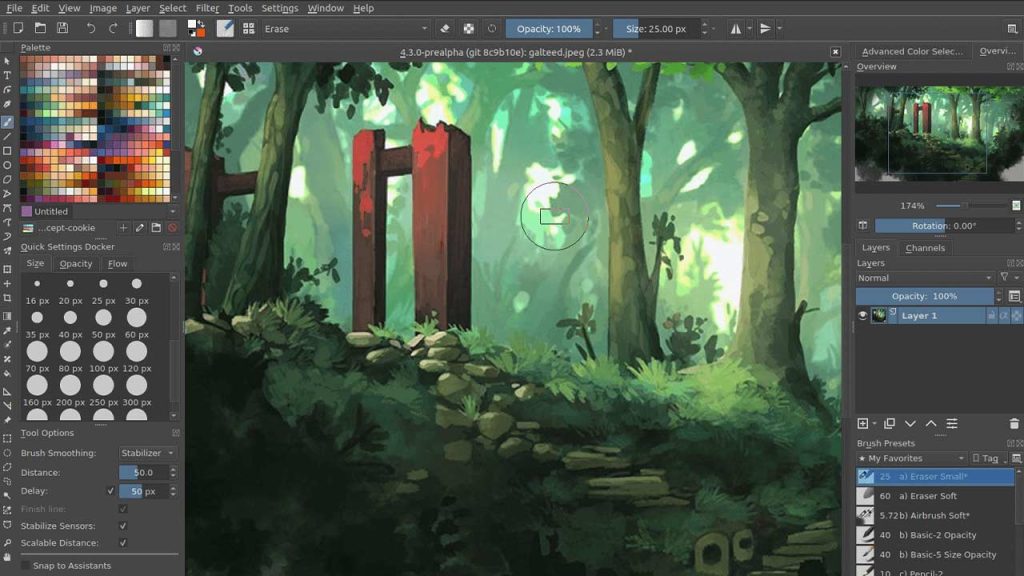
What Is Stock Animation?
Stock animation refers to pre-existing animation assets that are available for use in various projects. These assets can include animated characters, backgrounds, objects, and movements that have already been created by professional animators and are made available for purchase or licensing through online marketplaces or subscription services. Moreover, stock animation assets are typically designed with a specific visual style in mind, which can help to create a cohesive look across different projects. This can be especially useful for maintaining brand consistency or for creating a series of videos with a consistent aesthetic.
What Are The Advantages of Stock Animation?
- Time and cost-effective: Stock animation can be a more time and cost-effective solution than creating custom animation from scratch. This is because the animation assets are pre-made, which can significantly reduce the time and cost required for animation production.
- Wide range of options: There are many different types of stock animation available, which means that there is likely to be an option that fits the needs and style of your project. This can be especially useful for projects with tight timelines or budgets.
- Accessibility: Stock animation is often readily available through online marketplaces or subscription services, which makes it easy to access.
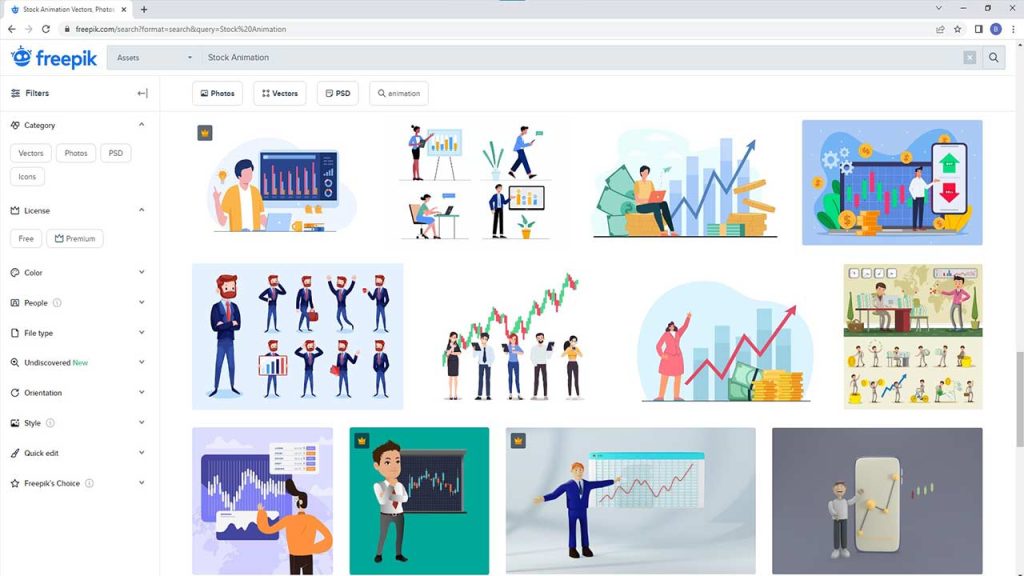
Custom Animation vs. Stock Animation: Key Differences
| Custom Animation | Stock Animation | |
| Originality | Custom animation is specifically created for a particular project. Hence, no two pieces of animation will ever be the same. | Stock animation is pre-made, which means other people can also use the same style of animation as you. |
| Cost | Custom animation is comparatively more expensive as it requires a dedicated team of animators and designers to create the animations from scratch. | Stock animation is often more cost-effective, as the animation assets are pre-made and can be licensed or purchased at a lower price point. |
| Time | Custom animation takes longer to create as every single frame has to be made meticulously. | Stock animation can be incorporated into a project more quickly as the animation assets are readily available. |
| Branding | Custom animation can be more effective for branding purposes as it can be designed specifically to match a brand’s aesthetic, color scheme, and messaging. | Stock animation may not be as effective for branding because the animation assets may not align perfectly with a brand’s unique style and messaging. |
| Flexibility | Custom animation offers more flexibility and control over the final product, as the animations can be tailored to meet the specific needs of a project. | Stock animation is less flexible as the animations may require additional editing to fit the specific requirements of a client. |
How Are Custom Animation And Stock Animation Made?
Although it would be quite difficult to explain the full process of how animation is made, here is a basic outline of the process.
- Concept Development: The process of developing a concept or idea for a project begins with a brainstorming session to determine what the message is going to be, who the target audience is, and the visual style that will be used.
- Scriptwriting: A script is then prepared using the concept to develop the story, characters, theme, dialogues, etc.
- Storyboarding: Using the script, a storyboard is prepared, which is a visual representation of the written material. The visuals are made using rough sketches of how the different scenes will transition onto the next, outlining the roles of the characters and the flow of the story.
- Character Design: Once a rough sketch of the characters are made, it is then further developed using specialized software. This step is primarily dependent on the art style and visual aesthetic of the animation that is used to portray the unique identity of the brand.
- Animation: As mentioned previously, the animation segment of the production process can be made with either modern or traditional means. This stage comprises of bringing the different characters, environments, movements, and actions together to give life to the animation.
- Sound: Sound design involves implementing the music as well as the voice-over to the animation. The tone of the animated film heavily relies on the sound design and effects used.
- Post-production: Post-production is the final stage of the animation process as it consists of editing all the elements created so far and putting them together. After this, the final product is ready for delivery.
Custom Animation vs. Stock Animation: What Can We Takeaway?
In the comparison between custom animation vs stock animation, it is quite evident that both these forms of animation can be utilized by different demographics of people as per their requirements. Custom animation is for those who need a final output made from scratch while adhering to the brand’s image. On the other hand, stock animation is for those who require a more affordable output while still maintaining a high degree of quality.


